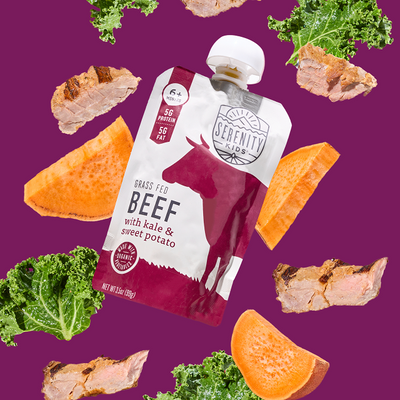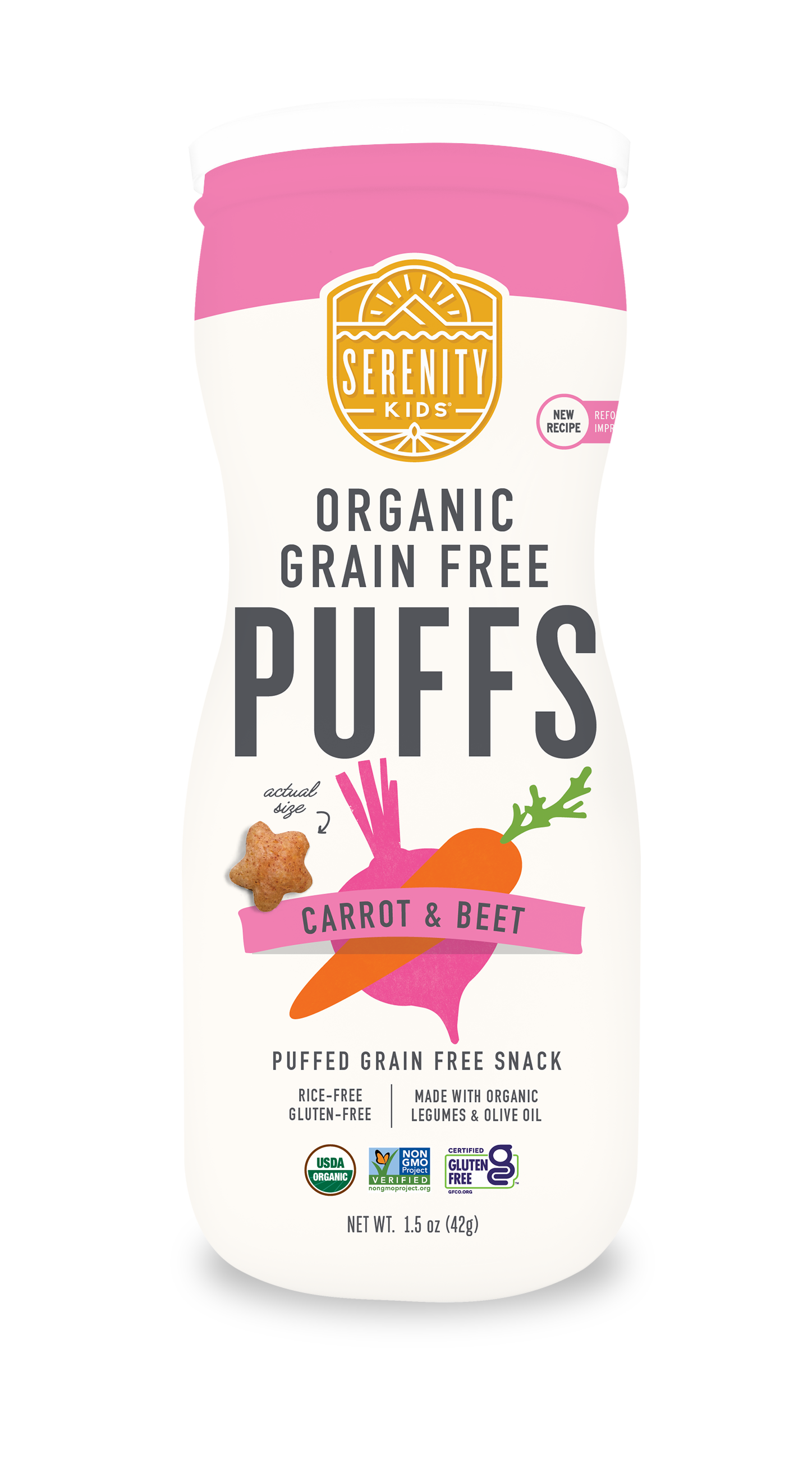At Serenity Kids, we believe a healthy child's journey begins long before their first bite. It starts with the very foundation of life: healthy soil. This concept might surprise you, but recent discoveries reveal a fascinating connection between the health of the Earth's microbiome – the trillions of microorganisms living in soil – and the health of our own gut microbiome.
So, What Is a Microbiome?
The term "microbiome" refers to a diverse community of microorganisms inhabiting various environments, including our bodies, plants, the oceans, and yes, even soil. These tiny organisms play a crucial role in their respective soil microbial communities.
Let's talk first about the soil microbiome, and why it matters.
The Secret Ingredient in Healthy Plants: The Amazing World of Soil Microorganisms
We often take soil for granted, but beneath our feet lies a hidden world teeming with life: the soil microbiome. This incredible ecosystem is made up of trillions of tiny creatures called soil microorganisms, including bacteria, fungi, and archaea. These soil microorganisms play a vital role in promoting plant growth by influencing various soil properties.
Understanding Soil Microbiology: Why it Matters
Soil microbiology is the scientific study of these microbial communities and their impact on soil properties. It's crucial for understanding how soil composition and microbial diversity influence:
- Plant Health and Growth: A diverse and thriving soil microbiome fosters stronger, more resilient plants.
- Nutrient Availability: Soil microbes play a vital role in making essential nutrients readily available for plants to absorb.
- Overall Plant Productivity: Healthy soil ecosystems lead to increased plant productivity, promoting a more abundant harvest.
The Hidden World of Soil Microbes
Beneath our feet lies a bustling metropolis – the soil microbiome. This vibrant community of bacteria, archaea, and fungi works in close partnership with plants, acting as a silent orchestra that orchestrates healthy plant growth.
- Unlocking Nature's Pantry: Soil microbes are nature's decomposers, breaking down organic matter and releasing essential nutrients that plants can readily absorb.
- Plant Protectors: They act as a natural defense system, safeguarding plants from harmful pathogens that can cause disease.
- Building a Strong Foundation: Healthy microbial communities contribute to a healthy soil structure, improving drainage and water retention, allowing plants to thrive.
Beneficial Microorganisms: Nature's Recycling Crew and Plant Protectors
Within the soil microbiome, many beneficial soil microorganisms (friendly soil microbes) work hard to keep plants healthy. These tiny decomposers break down dead leaves and other organic matter, a process that releases essential nutrients like nitrogen and phosphorus. Think of them as nature's recycling crew, turning waste into a nutritious feast for plants, in turn promoting plant growth!
Unlocking the Hidden Pantry: Soil Microbes and Nutrient Availability
Conventional farming often relies on fertilizers to provide plants with the nutrients they need to grow. But beneath our feet lies a hidden army of helpers – the soil microbiome. These tiny organisms, including bacteria and fungi, play a crucial role in unlocking a natural source of plant food: soil organic matter.
Soil organic matter is a mix of decomposed plant and animal matter. While it might seem like "waste," the soil microbiome acts like a breakdown crew, turning this organic matter into a valuable resource. They break down complex molecules and minerals that plants wouldn't be able to use on their own. In essence, they're unlocking a hidden pantry of nutrients – like nitrogen and phosphorus – that were previously locked away in the soil organic matter.
By converting this complex material into simpler forms that plants can readily absorb, the soil microbiome helps conventional farming practices be more efficient. Healthy soil with a thriving microbiome allows plants to access these natural nutrients, potentially reducing the need for additional fertilizers. So next time you think about healthy plants, remember the unseen heroes working tirelessly beneath the surface – the soil microbiome – unlocking the hidden pantry within soil organic matter.
The Living Heart of the Soil: Soil Microbial Biomass
Another important concept in soil structure is soil microbial biomass, which is essentially the weight of all the living microbes in a given amount of soil. It's a way to measure the active and dynamic portion of the soil microbiome.
Here's why soil microbial biomass is important:
- Indicator of Soil Health: A higher soil microbial biomass generally indicates a healthier soil ecosystem. These microbes play vital roles in nutrient cycling, decomposition, plant growth promotion, and disease suppression.
- Impact on Plant Growth: Healthy soil microbial biomass contributes to increased nutrient availability and plant growth.
- Sensitivity to Practices: Soil management practices like tillage, fertilization, and pesticide use can significantly impact soil microbial biomass.
By understanding and managing soil microbial biomass, farmers and land managers can promote a healthy and thriving soil ecosystem, ultimately benefiting plant growth and overall agricultural productivity.
What Does All This Mean for Plant Growth?
The activities of these beneficial microorganisms have a profound impact on plant health. Plant growth promoting microorganisms (PGPMs) are a specific group of beneficial microbes that directly contribute to a plant's success, and also the soil microbial diversity. There are two main types of PGPMs:
- Plant growth promoting bacteria: These bacteria (for example, plant growth promoting rhizobacteria, or PGPR) work their magic directly on plant roots, stimulating growth and helping plants take up more nutrients.
- Plant growth promoting fungi: These fungi form a symbiotic relationship with plant roots, essentially becoming an extension of the root system. This allows plants to access even more nutrients from the soil, giving them a competitive edge.
Disease Suppressive Soils: The Good Guys Fight Back!
Unfortunately, plants can still be attacked by harmful soil borne diseases. These are diseases that affect plants and are caused by pathogens that live in the soil. These pathogens can be various types of microorganisms, including:
- Fungi: These are some of the most common soil-borne plant pathogens. Examples include Fusarium wilt, Rhizoctonia root rot, and Verticillium wilt.
- Bacteria: Certain bacterial species can also cause soil-borne diseases, such as fire blight in apples and pears.
- Nematodes: These microscopic roundworms can parasitize plant roots, hindering nutrient uptake and plant growth.
Soil-borne diseases can be a significant challenge for agriculture, causing reduced crop yields and economic losses. Understanding the soil microbiome and the role of beneficial microbes in disease suppression can be a valuable tool for managing these diseases in a more sustainable way.
However, the good news is that the soil microbiome can sometimes fight back! In disease suppressive soils, beneficial microbes create an environment that makes it difficult for these pathogens to survive. It's a constant battle between good and bad microbes happening right beneath our feet!
The Earth's Microbiome and the Climate Challenge
Healthy soil, teeming with a diverse microbiome, has a surprising superpower – carbon sequestration. It can capture and store excess carbon dioxide (CO2) from the atmosphere, a key factor in mitigating climate change.
Threats to Our Earth's Microbiome
Unfortunately, the health of our soil microbiomes is under threat from unsustainable practices like:
- Heavy Reliance on Agrochemicals: The overuse of chemical fertilizers and pesticides disrupts the delicate balance of bacterial and fungal communities essential for healthy soil.
- Confined Animal Feeding Operations (CAFOs): Large-scale factory farms often rely heavily on antibiotics in animals. When manure from these operations is used as fertilizer, it can negatively impact soil microbes.
The Gut-Soil Connection: A New Horizon
Here's where the story gets fascinating. The food we eat impacts the health of our gut microbiome. Nutrient-rich food grown in healthy soil fosters a more diverse and beneficial gut microbial community. This connection highlights the importance of supporting food production practices that nurture the Earth's microbiome.
Arbuscular Mycorrhizal Fungi: Nature's Tiny Powerhouses
One fascinating aspect of the soil microbiome related to the gut microbiome is the presence of arbuscular mycorrhizal (AM) fungi. These beneficial fungi form symbiotic relationships with plant roots, essentially becoming extensions of the root system. Here's how arbuscular mycorrhizal fungi contribute to a healthy soil ecosystem:
- Enhanced Nutrient Acquisition: arbuscular mycorrhizal (AM) fungi extend their delicate filaments (hyphae) further into the soil, reaching areas inaccessible to plant roots. This allows plants to access essential nutrients like phosphorus, which might otherwise be unavailable.
- Stronger, Healthier Plants: By providing enhanced access to nutrients, arbuscular mycorrhizal (AM) fungi contribute to the growth of stronger, healthier plants that are more resistant to drought, disease, and pests.
While the direct link between arbuscular mycorrhizal fungi and our gut health is still being explored, there's an emerging theory about the indirect impact. Plants thriving with the help of arbuscular mycorrhizal fungi are more likely to be richer in nutrients and potentially beneficial microbes. Consuming these nutrient-rich foods might indirectly contribute to a more diverse and healthy gut microbiome.
A Thriving Ecosystem: Benefits Beyond the Plate
Healthy plants with diverse microbial communities in their root systems (including arbuscular mycorrhizal fungi) contribute to a healthier overall soil environment. This, in turn, might support a wider variety of soil microbes, some of which may be beneficial when they eventually reach our gut through various pathways (e.g., dust, contaminated water). While the specific impact of arbuscular mycorrhizal fungi on human gut health needs further exploration, their role in promoting a healthy soil microbiome and fostering nutrient-rich plants suggests a potential indirect connection to our own gut health. By supporting healthy soil ecosystems with practices that encourage arbuscular mycorrhizal fungi, we might be contributing to a healthier food chain and potentially, a healthier gut.
The Gut Health Revelation: A Web of Life
The health of the soil microbiome directly impacts the quality of the food we eat. Plants grown in nutrient-rich soil, nurtured by a diverse community of beneficial microbes, tend to be richer in vitamins, minerals, and potentially, beneficial microbes themselves. When we consume this nutrient-dense food, it nourishes our own gut microbiome, a complex ecosystem of trillions of bacteria that plays a critical role in digestion, immune function, and even mental well-being. In essence, the health of the soil microbiome is intricately linked to our own gut health, creating a web of life that connects the Earth beneath our feet to the well-being within us.
By understanding the amazing world of soil microorganisms, we can learn how to nurture the Earth and create a healthier environment for plants. Healthy plants lead to more nutritious food, which ultimately benefits the health of our children and ourselves. So, the next time you step outside, remember the hidden heroes under your feet – the incredible soil microbiome – working tirelessly to keep plants thriving and contributing to our overall health.
The health of the soil microbiome directly impacts the quality of the food grown in it. Nutrient-depleted soil leads to food with fewer essential vitamins, minerals, and the diverse microbial communities that nourish our own gut microbiome.
The Gut Microbiome: The Power Within
Our gut microbiome, a complex ecosystem of trillions of bacteria, plays a critical role in our overall health and well-being:
- Digestive Powerhouse: Gut microbes help break down food and extract essential nutrients that our bodies need to function.
- Immune System Guardian: A healthy gut microbiome supports a robust immune system, protecting us from illness.
- The Mind-Gut Connection: Emerging research suggests a link between gut health and mental well-being. A balanced microbiome may positively impact mood and stress levels.
Regenerative Agriculture: A Sustainable Solution
Regenerative agriculture focuses on improving soil health by promoting natural processes. This includes practices like:
- Reduced Tillage: This protects soil structure and fosters microbial communities, including AM fungi.
- Cover Cropping: Planting additional crops between harvest seasons helps retain moisture and nutrients while suppressing weeds. This creates a more favorable environment for soil microbes to thrive.
- Composting: Returning organic matter to the soil enriches it and feeds the microbiome, including arbuscular mycorrhizal fungi.
Studies show that food grown using regenerative practices often contains higher levels of phytochemicals, vitamins, and minerals. These translate to a more diverse and healthy gut microbiome, potentially benefiting overall health.
Feeding the Soil, Seeding the Gut: A Commitment to Wellness
At Serenity Kids, we believe in nurturing our children's health from the ground up. That's why we source ingredients for our organic baby food from carefully vetted regenerative farms. By supporting these practices, we contribute to:
- Healthy Soil: Fostering a thriving Earth microbiome for a healthier planet.
- Nutrient-Rich Food: Providing our babies with the best possible nutritional foundation, potentially promoting a healthy gut microbiome.
- Happy and Thriving Babies: Supporting optimal well-being through a focus on soil health and nutrient-dense food.
Choosing organic, regeneratively-grown food is about more than just nutrition; it's an investment in the health of our children, our planet, and for generations to come. It's about nurturing the Earth, nurturing our food, and ultimately, nurturing the health of our future.
Want to learn more about regenerative agriculture and how it contributes to a healthy planet and healthy babies? Serenity Kids is committed to ethical sourcing, regenerative farming practices, and lower carbon footprint. Explore our website to discover our range of delicious and nutritious organic baby food pouches, and the farms that we partner with. made with love from the ground up!















































